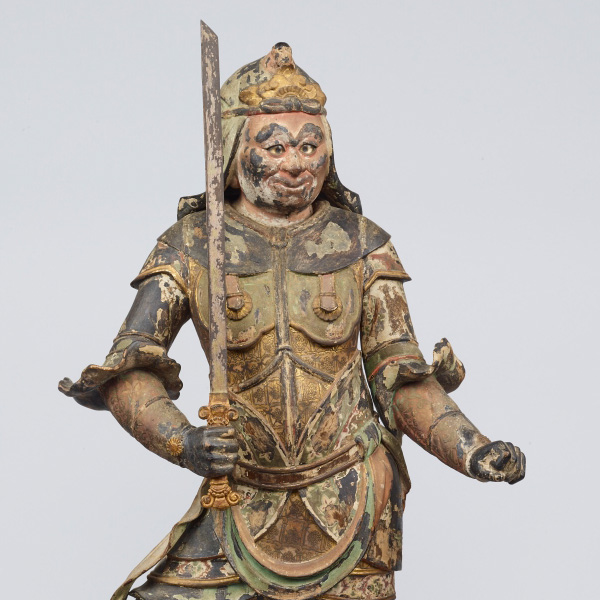Sculpture
-

The Monkey General, One of the Twelve Divine Generals
Passed down at Jōruriji Temple, Kyoto, Kamakura period, 13th century (Important Cultural Property)Japanese Gallery (Honkan) Room 11
September 30, 2025 (Tue) - December 21, 2025 (Sun)Japan has three main traditions of sculpture: Buddhist deities, Shinto deities, and portraits of people. Buddhism was introduced to Japan from the Korean Peninsula in the 6th century, together with sculptures of Buddhist deities. These sculptures were made primarily for worship. Making a sculpture was also an “act of spiritual merit” that would help one’s prayers to be answered.
In contrast, Shinto is the indigenous religion of Japan. Since ancient times, people believed that Shinto deities dwell in natural features like mountains and rivers, and rarely depicted them as humanlike sculptures. Even when a Shinto shrine had a sculpture for worship, the priests usually kept it hidden from view out of respect.
Some portrait sculptures were also worshipped, as they showed deified monks or samurai. Others were made to remember the dead and pray for their salvation. This gallery features works mainly from the Heian (794–1192) and Kamakura (1192–1333) periods, when many of Japan’s most admired sculptures were created.
| Designation | Name | Creation/ Excavation/ Provenance |
Period | Acquisition/ Ownership/ Accession Number |
CMT | ||
| Highlight | Guardian Gods | Heian period, 12th century | C-1892 | ||||
| Important Cultural Property | The Monkey General, One of the Twelve Divine Generals | Passed down at Jōruriji Temple, Kyoto | Kamakura period, 13th century | C-1878 | |||
| Highlight | Important Cultural Property | The Guardian God Bishamonten | Passed down at Nakagawa Temple, Nara | Heian period, 1162 | Gift of Mr. Kawabata Ryūshi, C-1869 | ||
| Highlight | Important Cultural Property | "Gyōdō" Mask: Bodhisattva | By Kaikei (died 1227) | Kamakura period, 1201 | Lent by Jōdoji Temple, Hyogo | ||
| Highlight | The Buddha Amida | Kamakura period, 12th–13th century | Lent by Ganshōji Temple, Shizuoka | ||||
| Important Cultural Property | The Wisdom King Aizen | Kamakura period, 13th century | C-1858 |
